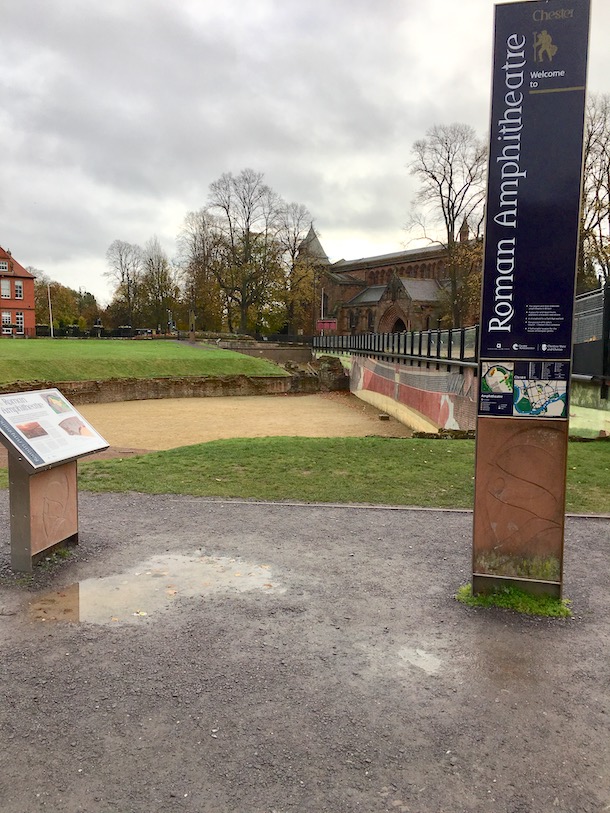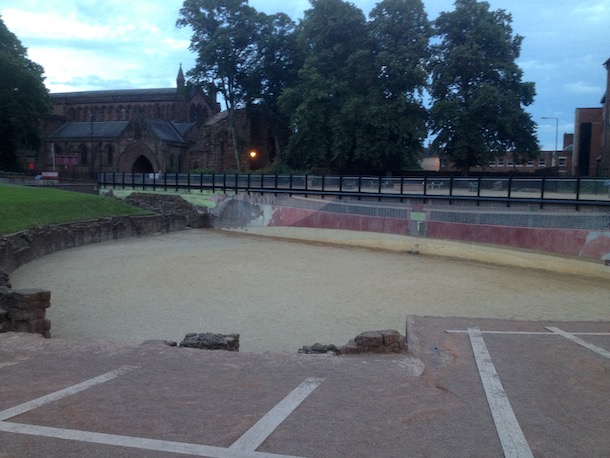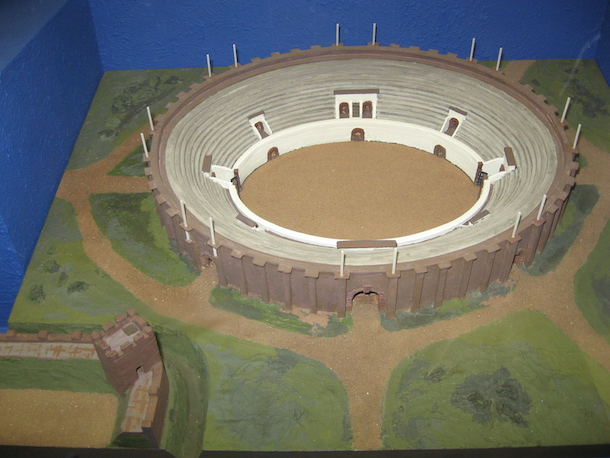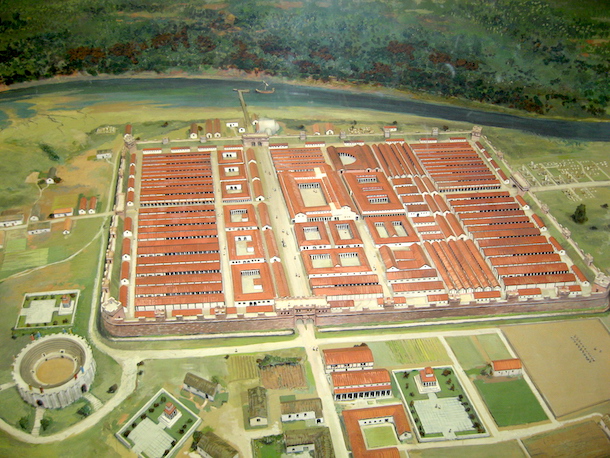Roman Amphitheatre
For more than 300 years, Chester was the site of a Roman legionary fortress. Established in the mid-70's AD, the fortress was known as Deva, after the Celtic name for the river Dee on which it was located. About AD 100, an amphitheatre was built immediately outside the south-eastern corner of the fortress defenses. However, it has been suggested that a wooden amphitheatre existed on the site from AD 75-80.

The Chester amphitheatre is one of the largest known from Roman Britain. Today almost half of the structure, including entrances on the eastern and northern sides, is visible. It is thought that the amphitheatre could have held up to 7,000 spectators sitting on tiered rows of wooden seats, arranged similar to a modern stadium. The front rows were reserved for the most important men, with women and slaves sat high up at the back.

The amphitheatre's two main entrances were facing the civilian town to the north and the river to the south. There were other entrances on the east and west sides. In between these main entrances, four pairs of doorways provided access both to a corridor running around the outside of the building and to the staircases leading up to the seats.

During excavations in the 1960's an altar dedicated to Nemesis was found in a small room near the northern entrance to the arena. Nemesis was the goddess of fate and divine vengeance, and was favorite of performers in amphitheatres. Making an offering to her before a performance was thought to help avoid an untimely death.

Across the Roman empire, it appears that three main forms of 'entertainment' were staged in Roman amphitheatres. The morning was the time for wild beast fights, or mock hunts. Criminals and others might be executed at midday. Finally, full gladiatorial combats, which usually began with a parade of the competitors in full array, took place in the late afternoon. There was also a religious aspect to gladiatorial shows, and it is possible that other religious festivities took place in the arena. These may have included public rituals involving the army, or celebrations such as the emperor's birthday. It has also been suggested that amphitheatres situated outside forts might have been used for weapons training. Tokens were issued to spectators for all public shows. These were stone or bone discs on which numbers were inscribed, telling people which entrance they were to use. One such token was recovered from the Chester site in 1960.

In the early 2nd century AD, Chester's amphitheatre seems to have stopped being used, possibly coinciding with the legion's posting to northern England, where it was engaged with the construction of Hadrian's Wall. The arena became a rubbish dump and the entire structure fell slowly into disrepair. Towards the end of the 3rd century AD, however, it was brought back into use. The staircases up to the seats were repaired, a new surface was laid in the arena, and the east entrance was extensively redesigned.
